How the Indians scalped an Englishman, and he survived and gave the scalp to the museum: the story of William Thompson
Categories: History | North America | World
By Pictolic https://pictolic.com/article/how-the-indians-scalped-an-englishman-and-he-survived-and-gave-the-scalp-to-the-museum-the-story-of-william-thompson.htmlScalping scenes are often shown in old Westerns, and they are almost always accompanied by disturbing music and dramatic pauses. In life, everything is not so theatrical, but no less fascinating: we tell the story of an Englishman, William Thompson, who managed not only to survive the scalping, but also to keep the trophy for himself.
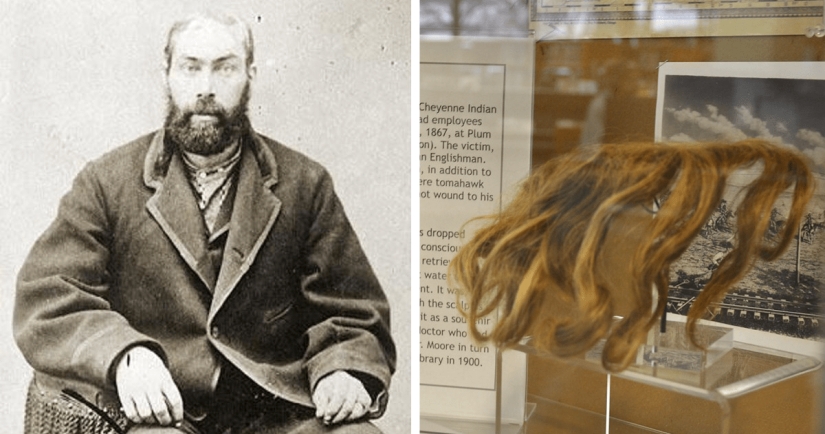
On a hot and muggy evening in August 1867, the Union Pacific Railroad headquarters discovered that the telegraph service had stopped working west of Plum Creek Station, where the future city of Lexington would be built.
Four telegraph operators and a foreman took a trolley to the station, but after another sharp turn, they found that the road ended abruptly – someone dismantled it and threw the rails next to it. The trolley derailed, and 25 Cheyenne warriors emerged from the ambush. They attacked the workers, among whom was William Thompson.
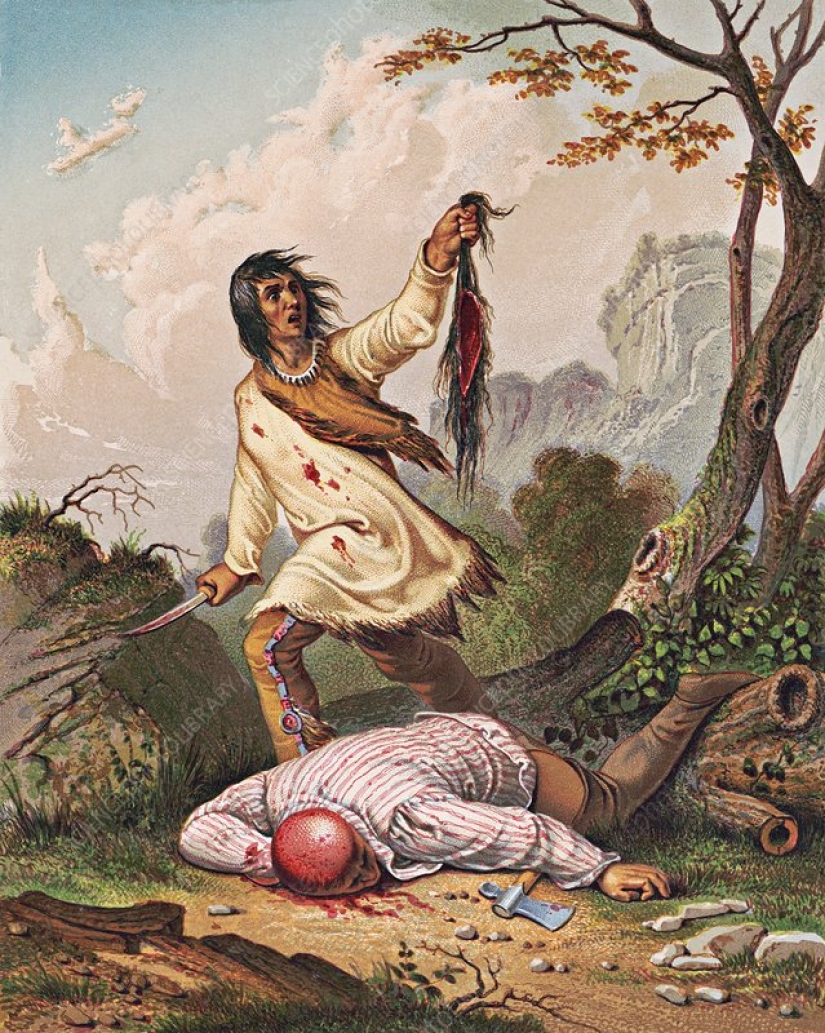
Thompson was shot in the shoulder, and one of the Cheyennes scalped him. Thompson was conscious and pretended to be dead – the debate about how he managed not to cry out in pain and how he got his own scalp, which was usually taken as a trophy, is still ongoing.
Earlier that day, a train left Omaha. They arrived on the scene after the Cheyenne attack and fell into the same trap. A 17-car train derailed; an engineer, a fireman, and a conductor were killed. For the first time in history, an Indian tribe managed to make an entire train derail.
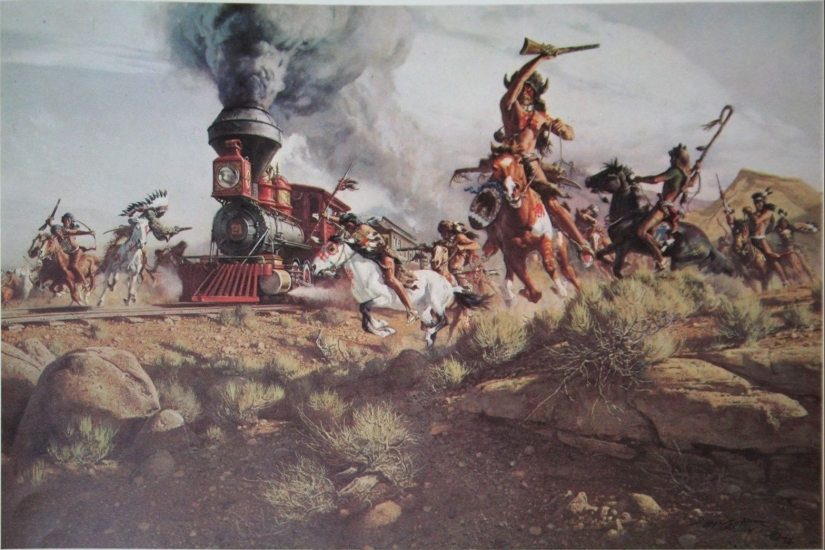
Realizing the scale of the disaster, Union Pacific sent a train to help the next day. Thompson was saved, although by that time he had already begun to get infected. Rescuers took him to a hospital in Omaha, where Dr. Richard Moore tried to sew on his scalp, but failed. However, he believed that Thompson was strong enough to fight off the infection, and he did soon recover.
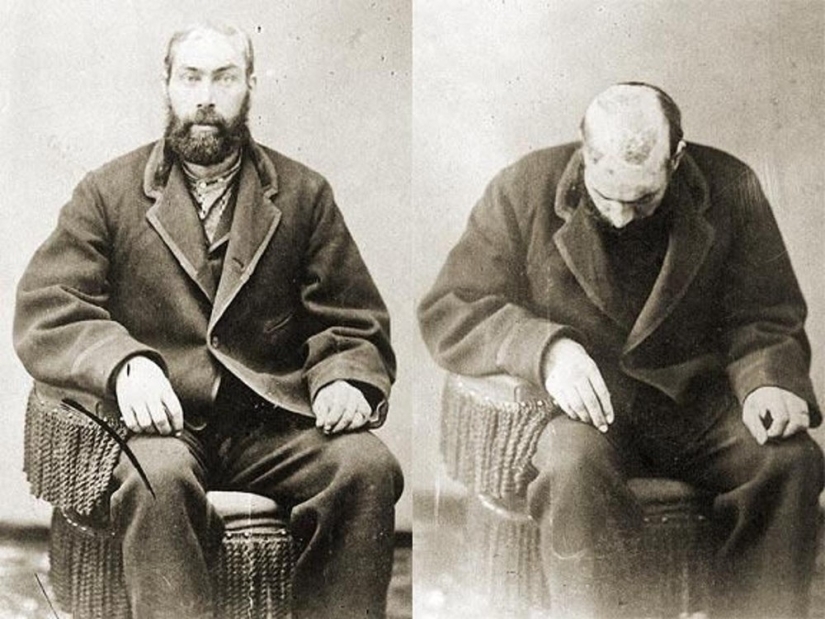
Thompson initially wanted to keep the scalp, but his English teammates were not happy with the trophy. In 1900, Thompson gave the scalp to Moore, the doctor who treated him. He, in turn, gave it to the Omaha Library, thinking that the exhibit would interest the locals.
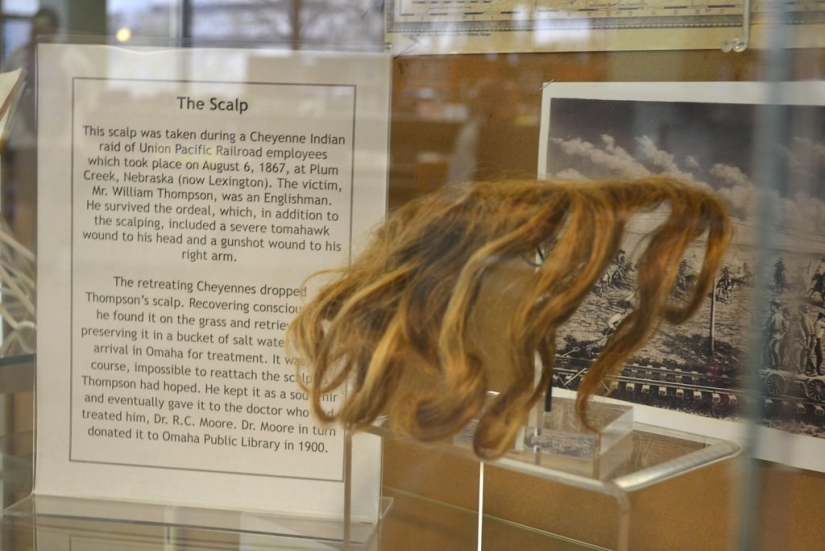
The scalp is currently stored in a special acid-free display case at the W. Dale Clark Library in Omaha. The exhibit has repeatedly appeared in the stories of American TV shows, and still attracts many visitors to the library.
Keywords: USA | North America | History | Museum | World | Survival | English
Post News ArticleRecent articles

The best-selling issue of Playboy for all time was the issue for November 1972 with the Swedish model Lena Söderberg. The record ...

How were great books created? How did Nabokov write Lolita? Where did Agatha Christie work? What was Hemingway's daily routine? ...
Related articles

Recently, conspiracy theories and everything that, one way or another, concerns conspiracies have become popular. People talk about ...

The legendary ointment "Zvezdochka" appeared in pharmacies of the Soviet Union around the 70s. Literally everyone remembers it, ...

The pearl of French architecture and the magnificent palace of a vain monarch, Versailles was created to emphasize all the ...

Imagine, but these photos were not taken at all with an expensive satellite or telescope, but with a regular Nikon camera. It turns ...